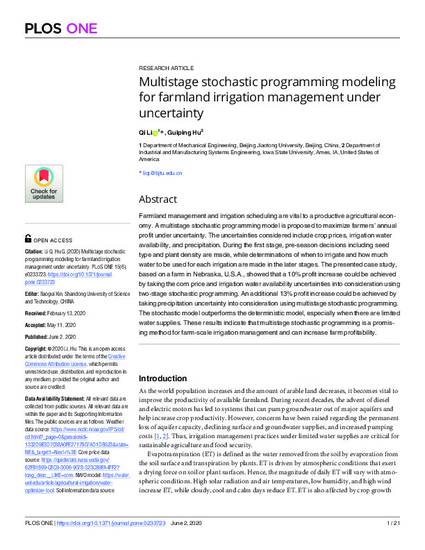
Farmland management and irrigation scheduling are vital to a productive agricultural economy. A multistage stochastic programming model is proposed to maximize farmers’ annual profit under uncertainty. The uncertainties considered include crop prices, irrigation water availability, and precipitation. During the first stage, pre-season decisions including seed type and plant density are made, while determinations of when to irrigate and how much water to be used for each irrigation are made in the later stages. The presented case study, based on a farm in Nebraska, U.S.A., showed that a 10% profit increase could be achieved by taking the corn price and irrigation water availability uncertainties into consideration using two-stage stochastic programming. An additional 13% profit increase could be achieved by taking precipitation uncertainty into consideration using multistage stochastic programming. The stochastic model outperforms the deterministic model, especially when there are limited water supplies. These results indicate that multistage stochastic programming is a promising method for farm-scale irrigation management and can increase farm profitability.
Available at: http://works.bepress.com/guiping_hu/56/

This article is published as Li, Qi, and Guiping Hu. "Multistage stochastic programming modeling for farmland irrigation management under uncertainty." PLoS ONE 15, no. 6 (2020): e0233723. DOI: 10.1371/journal.pone.0233723. Posted with permission.